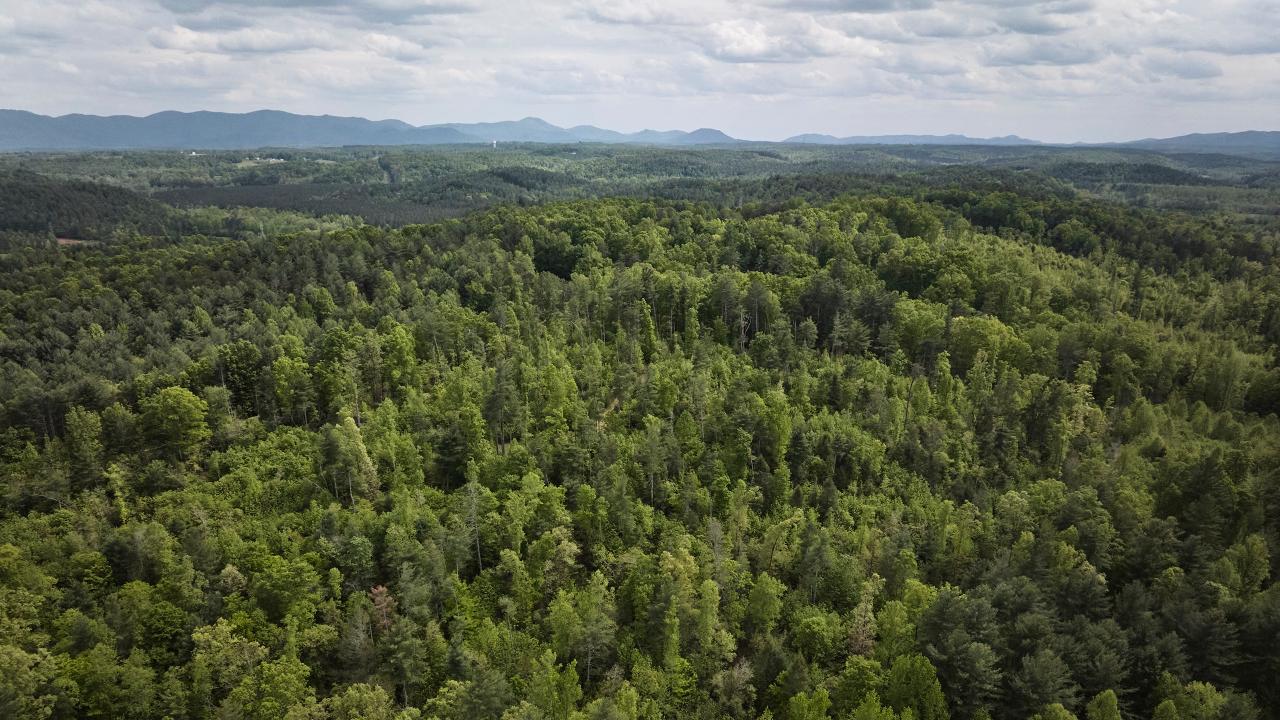
EUDR latest developments
The next phase of the EUDR response mechanism for U.S. hardwoods is underway. The framework that is being developed comprises the following components:
a) a regularly updated database differentiating U.S. hardwood harvest geolocations which are “deforestation-free” from those which are not “deforestation-free”.
b) an on-line application to make this data freely accessible to U.S. hardwood mills and other operators engaged in the export trade.
c) independent third-party assessments of the risk of illegal harvesting in the U.S. hardwood producing states.
d) a chain of custody (CoC) standard for hardwood mills and downstream distributors, exporters, and manufacturers to ensure that the legal and deforestation-free claim is applied only to verified U.S. hardwood.
The database of U.S. hardwood harvest geolocations will be prepared and maintained by a technical consultancy commissioned by AHEC that will combine satellite imagery with digital cadastral (property) data. By regularly monitoring these datasets (at least quarterly), and through development of algorithms, use of AI, and ground truthing as required, the technical consultancy will categorise all hardwood forest disturbances into those where there is evidence of deforestation and those where there is evidence of selection harvesting/continuous cover operations not leading to deforestation which are thereby "deforestation-free". The database will allow for regularly updated quantification of deforestation risk in the U.S. hardwood sector at national, state and more localised levels.
After an extensive bid out process AHEC have selected a specialist data company that already has experience of building data operating systems to monitor land changes. They have been commissioned to pilot a simulation of this system for a single hardwood-producing state. This pilot will help clarify how satellite data can identify canopy changes that signify hardwood harvests and those which are deforestation-free and the level of resolution and frequency of forest assessment required to satisfy the law. It will also provide an opportunity to present a working model to the European Commission’s (EC) EUDR working group and to EU regulators before it is rolled out across all hardwood producing States.
U.S. state legality risk assessments aligned with EUDR requirements are now being prepared for the 33 states identified as significant producers of hardwoods. The assessments were commissioned by AHEC from Dovetail Partners in November 2023 and are due for completion by June this year. They are being undertaken according to the “Framework for Jurisdictional Risk Assessment of Legal Compliance of Hardwood Production in the USA” developed by AHEC’s Sustainable Hardwood Coalition (SHC) initiative. This functions as a standard for consistent evaluation of the risk of sourcing illegally harvested hardwood within each state jurisdiction and covers all aspects of legal harvesting and trade required of EUDR. For the assessment, Dovetail Partners has put together a team of experienced forestry and natural resource professionals with extensive experience in applied forest management, sustainability assurance and risk assessment. The risk assessment process involves review of publicly available information as well as interviews with knowledgeable experts and stakeholders, including staff at state agencies, university extension, industry/landowner associations, NGOs, and other groups. Each completed assessment is subject to additional scrutiny by an independent expert before publication as an SHC-endorsed risk assessment.
Impact of EUDR for European wood supply becoming evident. There is further evidence of the concerns the European wood sector has in terms of the potential impact of the EUDR on their trade in the form of a letter written from the German wood sector to the EC. It raises the question that the emerging impact of European wood production and supply could unfairly harm legitimate supplies that are recognised deforestation-free and already comply with the EUTR. The impacts could be particularly onerous on forests where there are large numbers of private landowners such as in Germany and France while being easier for countries with large state-owned forest land such as Poland and Croatia. We already know from observing the roll- out of the EUTR, a much simpler process, that implementation and enforcement varied significantly across member states. So, it is feared that EUDR could further amplify these different approaches and clearly this a concern to German wood industries, who anticipate an immediate and robust response from their appointed regulators.
FAQ guidance from the EC is a regular and informal response to indicate how industries can and should respond to EUDR requirements. These FAQ releases provide a valuable insight into the thinking of the EC in relation to the law. The latest FAQ provides more encouragement for the potential solution planned by AHEC to demonstrate US hardwood compliance with EUDR legality and deforestation-free requirements. The response expands on the “silo solution” and specifically indicates that “an operator can, in specific circumstances, provide geolocation coordinates for a number of plots of land higher than those where the commodities were actually produced”. There is also an amendment to the guidance on the meaning of the “date or time range of production” which now allows that “time range” may also apply to the “duration of the relevant harvesting operation” in the case of timber products. And the new FAQ welcomes the development of specific innovative procedures in producing countries outside the EU to help operators comply with their obligations.
The EU Observatory was launched in December last year by the Joint Research Council of the European Commission under the terms of the EUDR to provide supporting information for risk analysis and impact monitoring including world-wide analysis of deforestation and degradation based on satellite data and of trade flows of regulated commodities. At first sight the data provided is encouraging for all U.S. wood suppliers as it shows that deforestation in the United States, according to EUDR definitions, is effectively zero. This does, at least, imply that the U.S. will likely be identified as a “low risk” country and subject only to “simplified” due diligence under the terms of EUDR. However, this will not exempt U.S. hardwood products from the geolocation obligation which applies irrespective of the level of risk. The remote sensing data currently provided by the EU Observatory, which is entirely based on existing publicly available datasets, is also of such low resolution that it will be very much up to the private sector to provide data solutions suitable for compliance purposes. Which will of course place new cost burdens on European industries and those placing wood products on the EU market.
The Information System pilot study is currently being carried out involving around 100 companies and organisations. AHEC are not aware at this stage if any are from the wood sector. This pilot is to ascertain how the EC’s Information System will operate in its role to receive and disseminate the vast amount of data that will be generated across a range of agricultural commodities including forest products. All operators will need to enter data on this platform which will include geolocations and due diligence statements for every consignment first placed on and exported from the EU single market. All EU traders that are not SMEs – including distributors, manufacturers, and retailers - will also be obliged to enter this data onto the platform for each individual consignment of regulated products traded inside the single market. The challenge of creating such a system in such a short time scale is becoming increasingly apparent from the feedback AHEC is receiving. For example, we have learnt from one of the data providers involved in the pilot that the Information System at this stage can only receive a maximum of 200 geolocations per entry and we suspect from research already carried out that some consignments of U.S. hardwoods could conceivably be accompanied by a thousand or more geolocations!
Responding to current geolocation requests, AHEC is aware that U.S. hardwood exporters are already receiving requests for geolocation data not just from EU hardwood importers but also importers outside the EU selling products into the single market. These requests are partly driven by ignorance of the timing and requirements of the law and partly by genuine concern that it is material being processed this year that will be placed on the market next year after the law comes into force. At this point in time without a data system in place to provide and analyse geolocations to show they are deforestation free; most exporters will be unable to comply. This does not mean that when the law comes into place the industry will be at a disadvantage. Why? Because the data system that AHEC is commissioning will be able to provide geolocation data for deforestation and degradation free plots of land from which the material in any given container could have come from (now understood to be an approach the EC will accept). The analysis of satellite data being commissioned by AHEC will identify all harvest geolocations across the U.S. hardwood producing region, and their period of harvest since 31st December 2020, the cut-off date for EUDR. We’re confident that it will confirm that there is a negligible risk of deforestation or degradation in line with the EUDR definitions, and that all harvest geolocations supplied through the platform will be deforestation-free. The procedures for compiling the most relevant geolocation data for individual consignments delivered from 31st December 2024 when enforcement of EUDR is scheduled to begin, have yet to be worked out. However, this will be a priority when developing the chain of custody standard and procedures, a process that will start in February this year.
It is important to communicate that AHEC is working with the U.S. hardwood industry to develop a system that will facilitate EUDR compliance. We advise that exporters reassure concerned buyers that a system is being developed that will potentially enable all containers of U.S. hardwood arriving in the EU from 31st December 2024 to be accompanied by the documentation required to demonstrate legal and deforestation-free origin, including geolocation data. While we are extremely optimistic a workable solution can be developed in the time frame there are still many hurdles to overcome and much to learn as the system evolves. Establishing a funding stream and obtaining support in principle from the European Commission will be essential elements to ensure we can succeed. We will continue to provide regular updates and advise immediately if the situation changes.
